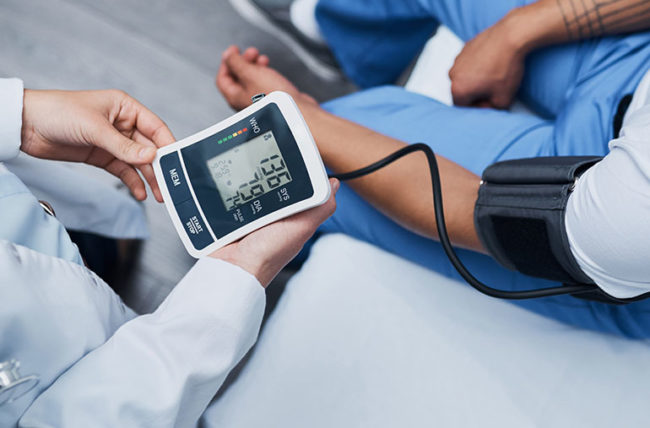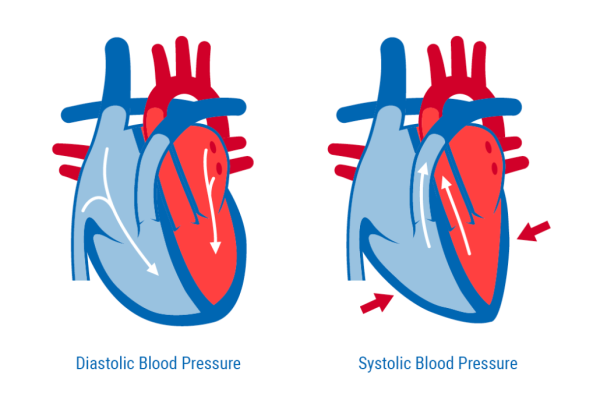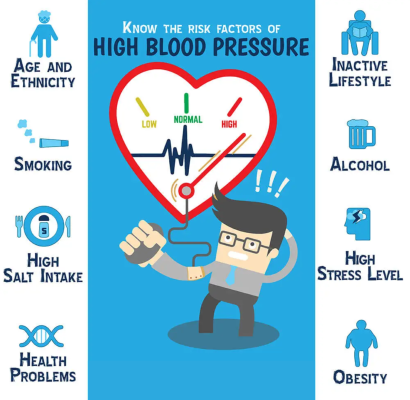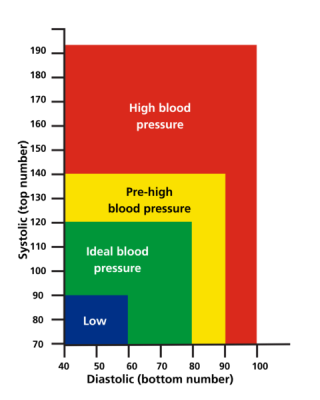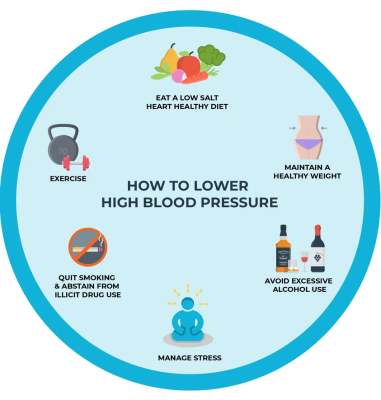Blood Pressure: Hypertension Signs and Symptoms
Hypertension, commonly known as high blood pressure (HBP), is a significant health concern affecting millions globally. It often goes unnoticed due to its lack of obvious symptoms, earning it the nickname “silent killer.” High blood pressure can lead to serious health complications, including heart disease, stroke and kidney failure. Recognizing the signs and symptoms of HBP early is vital for effective management and treatment.
This article aims to provide a comprehensive overview of hypertension, detailing its types, signs, symptoms and risk factors. Furthermore, we will discuss effective strategies for monitoring and managing this condition. By the end, you’ll understand how to take proactive steps toward maintaining a healthy blood pressure level.
What is Blood Pressure?
Blood pressure is the force exerted by circulating blood against the walls of blood vessels. It is expressed as two measurements:
- Systolic pressure: The pressure in your arteries when your heart beats. This is the higher number in a blood pressure reading.
- Diastolic pressure: The pressure in your arteries when your heart rests between beats. This is the lower number.
Blood pressure is typically measured using a sphygmomanometer, which inflates a cuff around the arm. More often this instrument is referred to as a blood pressure cuff or a blood pressure monitor. A normal reading is usually around 120/80 mmHg. Blood pressure readings above this threshold are considered hypertensive and indicate different stages of HTN.
Understanding Hypertension
Hypertension occurs when blood pressure readings consistently exceed 130/80 mmHg. It can be classified into two main types:
- Primary Hypertension: This type develops gradually over many years and has no identifiable cause. It often arises from a combination of genetic, environmental and lifestyle factors. According to the American Heart Association, about 90-95% of hypertension cases fall under this category.
- Secondary Hypertension: This type is caused by an underlying condition, such as kidney disease, hormonal disorders or certain medications. Secondary hypertension is generally more sudden in onset and can often be treated effectively by addressing the underlying cause. Studies indicate that approximately 5-10% of hypertension cases are secondary.
Hypertension is widespread, affecting nearly 1 in 3 adults in the United States. It can occur in anyone but is particularly common in:
– Older adults: The risk increases with age, with nearly 75% of people over 60 experiencing hypertension.
– Those with a family history: Genetics can play a significant role; if one or both parents have high blood pressure, your risk is higher.
– Individuals with unhealthy lifestyle choices: Poor diet, lack of exercise, and smoking contribute significantly to the development of hypertension.
Signs and Symptoms of Hypertension
Recognizing the signs of high blood pressure is essential for timely intervention. While many people may not experience noticeable symptoms, some common signs include:
- Headaches: Frequent or severe headaches can indicate elevated blood pressure, particularly if they are accompanied by other symptoms.
- Dizziness: A feeling of lightheadedness or imbalance may suggest that blood pressure is elevated.
- Shortness of Breath: Difficulty breathing, especially during physical activities, can be a concerning sign.
Serious Symptoms of HBP (When to Seek Immediate Help)
If you experience any of the following symptoms, seek medical attention promptly:
– Chest pain: This may indicate a heart issue and requires immediate evaluation.
– Vision problems: Blurred vision or seeing spots can be linked to high blood pressure and may indicate severe complications.
– Blood in urine: This can signal serious health conditions and should not be ignored.
High Blood Pressure Symptoms in Females
Women may experience unique symptoms related to high blood pressure. Some of the high blood pressure symptoms women might encounter include:
- Fatigue: Feeling unusually tired can be a subtle sign of hypertension.
- Nausea: Some women report nausea, particularly during periods of stress or when blood pressure spikes.
- Changes in menstrual cycle: Irregularities can occur as a result of hormonal imbalances linked to hypertension.
The good blood pressure range for female is outlined in the table below for easy reference.
Risk Factors Causing Hypertension
Understanding the risk factors and causes for hypertension is key to prevention. Common risk factors include:
Lifestyle Choices
- Poor Diet: A diet high in salt, saturated fats, and processed foods can significantly contribute to hypertension. According to the CDC, reducing sodium intake can lower blood pressure by 5-6 mmHg.
- Lack of Physical Activity: Sedentary lifestyles increase the risk of developing high blood pressure. Engaging in at least 150 minutes of moderate exercise per week can help lower blood pressure.
- Excessive Alcohol Consumption: Drinking too much alcohol can raise blood pressure levels. The American Heart Association recommends limiting alcohol to one drink per day for women and two for men.
- Smoking: Tobacco use increases blood pressure and damages blood vessels. Quitting smoking can lead to significant improvements in cardiovascular health.
Genetics
Family history plays a significant role in hypertension. If one or both parents have high blood pressure, your risk is considerably higher. Studies show that having a sibling with hypertension also increases your likelihood of developing the condition.
Age and Gender
Blood pressure tends to rise with age. Men are generally more likely to develop hypertension at a younger age compared to women, but the risk for women increases post-menopause. Statistics reveal that nearly 60% of adults aged 65 and older are affected by high blood pressure.
Chronic Conditions
Conditions such as diabetes, kidney disease and sleep apnea can increase the risk of developing hypertension.
How to Monitor Your Blood Pressure
Regular monitoring is essential for managing blood pressure effectively. Here are some tips for monitoring:
- Regular Check-Ups: Schedule annual visits with your doctor to check your blood pressure.
- Home Monitoring: Consider investing in a home blood pressure monitor. Make sure to:
– Measure at the same time each day for consistency.
– Follow the manufacturer’s instructions for accurate readings.
- Understand Readings: Familiarize yourself with what your readings mean:
– Normal: Below 120/80 mmHg
– Elevated: 120-129 systolic and less than 80 diastolic
– Hypertension Stage 1: 130-139 systolic or 80-89 diastolic
– Hypertension Stage 2: 140 or higher systolic or 90 or higher diastolic
Managing and Preventing Hypertension
Managing and preventing hypertension involves lifestyle changes and, if necessary, medication. Here are some effective strategies:
Lifestyle Changes:
✓ Healthy Diet: Emphasize fruits, vegetables, whole grains, and lean proteins. Limit salt intake to less than 2,300 mg per day. Following the DASH (Dietary Approaches to Stop Hypertension) diet can significantly lower blood pressure.
✓ Regular Exercise: Aim for at least 150 minutes of moderate aerobic activity each week. Activities like walking, cycling, and swimming can effectively lower blood pressure.
✓ Weight Management: Maintaining a healthy weight reduces strain on your heart. Losing even a small amount of weight can have a significant impact on blood pressure levels.
✓ Limit Alcohol and Quit Smoking: Reducing alcohol intake and quitting smoking can dramatically improve heart health and lower blood pressure.
Medical Treatments and Medications
In some cases, lifestyle changes alone may not be enough. Consult your healthcare provider about hpb medicine, which may include:
- Diuretics: Help eliminate excess sodium and water, reducing blood volume.
- ACE Inhibitors: Relax blood vessels, making it easier for the heart to pump blood – medications like Cresar or Teltan.
- Calcium Channel Blockers: Reduce the heart’s workload by lowering the amount of calcium that enters heart and blood vessel cells.
Stress Management Techniques
High stress can contribute to hypertension. Consider incorporating stress management techniques such as:
✓ Mindfulness and Meditation: These practices can help calm the mind and body, reducing stress levels.
✓ Yoga: Engaging in yoga can lower blood pressure and improve overall well-being.
✓ Regular Sleep: Aim for 7-9 hours of quality sleep each night, as poor sleep is linked to high blood pressure.
To learn more on effective strategies for managing hypertension, check out our comprehensive article “How to low your blood pressure safely and naturally“.
FAQ
1. What is considered high blood pressure?
High blood pressure is typically defined as a reading above 130/80 mmHg.
2. What are the common signs of elevated blood pressure?
Common signs include headaches, dizziness, and shortness of breath.
3. How to prevent high blood pressure?
You can prevent hypertension through a healthy diet, regular exercise, and managing stress.
4. How to reduce your blood pressure quickly?
To quickly reduce blood pressure, try deep breathing exercises, drink some water, eat dark chocolate or splash cold water on your face / take a cool shower. Engaging in light physical activity can also help.
5. What foods cause high blood pressure?
Foods that can contribute to high blood pressure include salty processed foods, processed meats, fast food, and sugary beverages. Alcohol and pickled foods high in sodium can also be problematic. Limiting these can help maintain healthy blood pressure levels.
6. When should I seek medical help for high blood pressure symptoms?
Seek immediate help if you experience chest pain, severe headaches or vision problems.
Recognizing the signs and symptoms of HBP is crucial for effective management. If you experience any warning signs, don’t hesitate to consult a healthcare provider. Regular monitoring, combined with a healthy lifestyle, can significantly reduce the risks associated with hypertension.
Take proactive steps toward your health today. If you or a loved one is in need of hypertension treatments, visit AjantaStore to explore our range of effective hbp medications. Your heart health is worth it!
Links to Relevant Studies
- Effects of lifestyle modification on patients with resistant hypertension: results of the TRIUMPH randomized clinical trial
- A study to evaluate the impact of menopause on blood pressure regulation during exercise
- Effect of intense vs. Standard hypertension management on nighttime blood pressure – an ancillary study to sprint
- Mitochondrial health, cardiovascular risk, and blood pressure targets in hypertensive adults
- Improving blood pressure screening and treatment strategies in young adults

